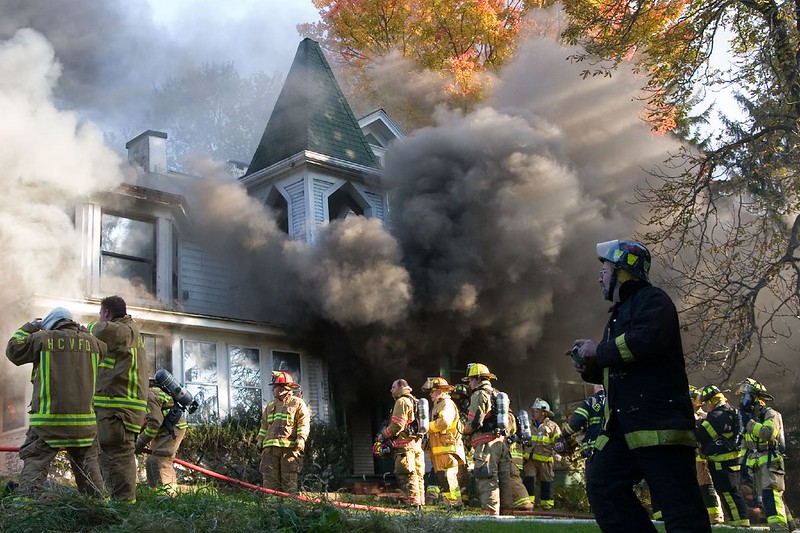From the Firefighter Safety Research Institute comes a reminder that in the event of a house fire you should be ready to bug out in three minutes or less.
Due to synthetic materials, furniture, and open floor plans, we have 3 minutes or less to escape a house fire. Make sure all #smokealarms are working in your home. #SmokeAlarmsSaveLives https://t.co/8H3t48iStg pic.twitter.com/N9Hhnu5uoC
— Fire Safety Research Institute (@FSRI_org) November 5, 2019
The three-minute fire evacuation rule started to gain prominence after a series of 2012 tests by Underwriters Laboratories, the National Institute of Standards, and the FDNY showed that rooms in modern homes can reach a “flashover point” — the point at which all items ignite at once — in three minutes or less. Compare this to the roughly 20 minutes that rooms in older, pre-1980 houses took to reach that same point.
You can see some interior footage of a fireplace fire in a modern home, here, keeping an eye on the video’s play time will tell you just how quickly a fire can engulf an entire home.
The reason modern homes burn faster is twofold:
- Household furniture is now largely made of petroleum-based synthetics (i.e. plastics and polymers), which burn and/or melt and have zero natural fire retardant properties.
- Modern houses have more open floorplans with fewer, larger rooms, so that air can move freely around in them and keep a fire supplied with oxygen.
FDNY has a documentary on the 2012 burn tests, which were staged in a row of furnished houses, with extensive monitoring of all the rooms in the house as the tests were run.
Here is part of the description of the tests:
The two-weeks of tests — which is the most complete series of fire-related studies ever conducted — began on Governors Island on July 2. The buildings in Brick Village, which include 20 wood-frame townhouses with brick exteriors built in the 1980s, were slated to be demolished. They were given access to the buildings by the Trust.
Representatives from NIST and UL, who have worked with the FDNY on more than 100 full-size building burns together, including the extensive wind-driven fire study in 2006, set up sensors, cameras and other equipment in each building to collect more than 100 data points during 20 different tests.
The data collectors include heat-flux gauges, pressure sensors, bi-directional probes and thermal imaging cameras. Some of the sensors, like the heat gauges, were set up at different heights in each room, to test temperatures for someone laying on the ground, someone crawling, someone standing and the ceiling temperature (the highest in the room).
The experts said that they already know fires burn faster now than ever before because a home’s contents have changed. Everything from weatherproof windows and pressed-wood furniture to synthetic carpeting and high ceilings affect a fire’s ability to grow and move.
So keep your go-bag ready, because a house fire is one of those scenarios where you just won’t have enough time to pack before you leave.


You are reporting the comment """ by on